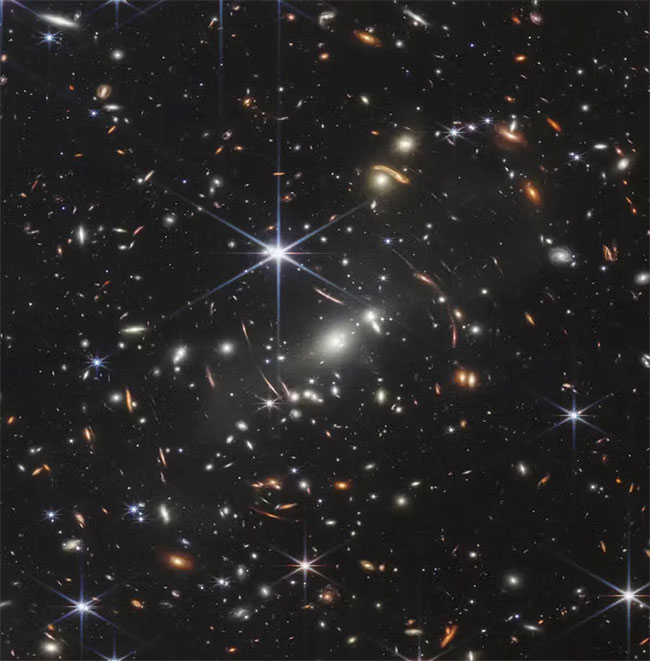What does the edge of the universe look like?
Perhaps this will remain a question for mankind forever, because we cannot answer it, but try to imagine if the universe had a limit, what would that boundary be like?

Throughout history, humans have always longed to answer the question of where the vastness of space ends? (Illustration: Getty).
For thousands of years, the night sky has remained an unchanging mystery. People all over the world have used the stars to navigate and explore the universe.
To the naked eye, the sky seems endless. However, thanks to the invention of the telescope 400 years ago, we can see much further.
Telescopes were constantly improving, allowing new discoveries to be made in the sky. New stars were discovered and astronomers noticed strange clouds, called "nebulae", from the Latin word for "mist" or "cloud".

This image of the giant Triangulum Galaxy was created from 54 images taken by the Hubble telescope. Measuring an incredible 34,372 x 19,345 pixels, it is the second largest image ever taken by Hubble and released (Image: NASA, ESA, M.Durbin, J.Dalacanton, BFWilliams).
Nearly 100 years ago, we determined that these nebulae were actually galaxies like the Milky Way, in which Earth is located.
Interestingly, no matter which direction we look at the universe, we see more and more galaxies. In this image taken by the James Webb Space Telescope, a part of the sky the size of a grain of sand contains thousands of galaxies.
It is hard to imagine that there is a border beyond which there are no more images like this.

NASA's James Webb Space Telescope is the instrument that has taken the most distant and clearest pictures of the universe to date. This is James Webb's first deep-field image, capturing the galaxy cluster SMACS 0723 in incredible detail (Image: NASA, ESA, CSA, STScl).
The Edge of the Universe
However, there is technically a boundary to the universe that we call the 'visible' universe. This is because no one really knows whether the universe is finite or infinite, and probably never will . This has to do with the speed of light.
We can only see light that has had enough time to travel to Earth. Light travels at exactly 299,792,458 meters per second. Even at this speed, it still takes a very long time to travel across the universe. Scientists estimate the size of the universe to be at least 96 billion light years across, and it is very likely much larger.
If the universe had boundaries, what would we see?
Suppose we traveled to the very, very distant edge of the universe, what would be there?
Many scientists theorize that there will be just… more universes. But there are other theories, too. If our universe is finite, and you reach the end, you might end up in a completely different universe.
Although there is no clear answer to the question "Does the universe have boundaries?", it is questions like these that help us continue to learn and explore the universe and understand Earth's place in that vast space.
- Up to the universe to watch the Earth with the cost of
- Fly to the edge of the universe without the engine
- Identify the edge of space
- Anything has a margin, but their history will make you laugh.
- American supersonic aircraft carrying people to space successfully
- Discovering the universe 'most lonely' universe
- It is cold in the northern mountains due to storms
- How does light help people explore the universe?
- Life may exist in the constellations at the edge of the Milky Way
- Blue Origin carried 6 passengers to the edge of space after two years
- New spam block tool in Edge
- China designed aircraft to take passengers to visit the universe
 Van Allen's belt and evidence that the Apollo 11 mission to the Moon was myth
Van Allen's belt and evidence that the Apollo 11 mission to the Moon was myth The levels of civilization in the universe (Kardashev scale)
The levels of civilization in the universe (Kardashev scale) Today Mars, the sun and the Earth are aligned
Today Mars, the sun and the Earth are aligned The Amazon owner announced a secret plan to build a space base for thousands of people
The Amazon owner announced a secret plan to build a space base for thousands of people